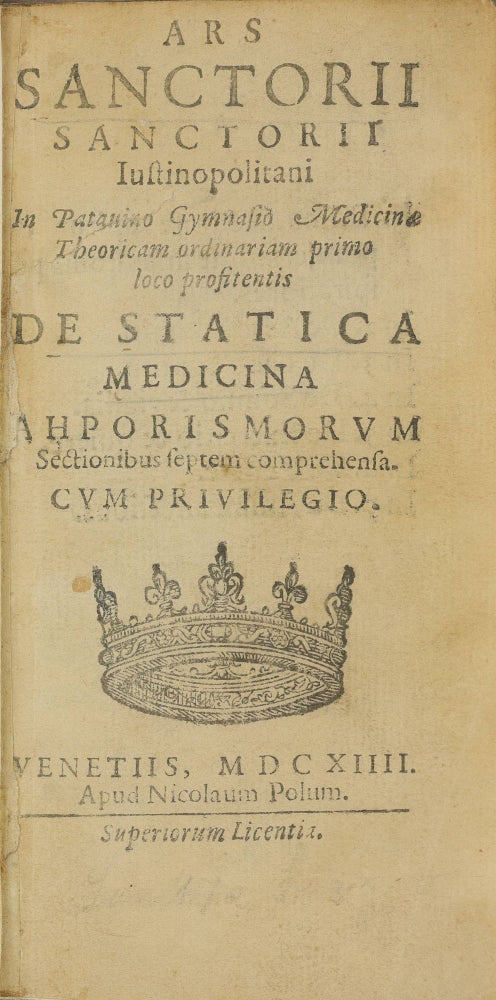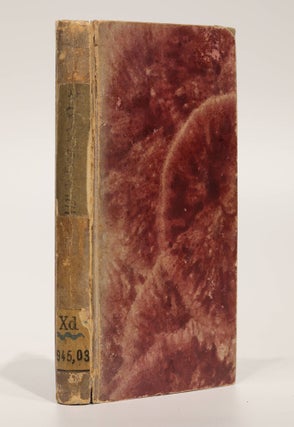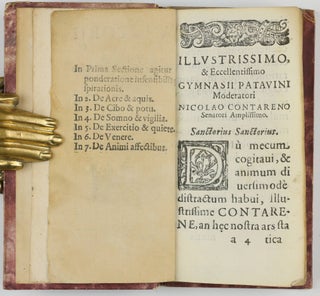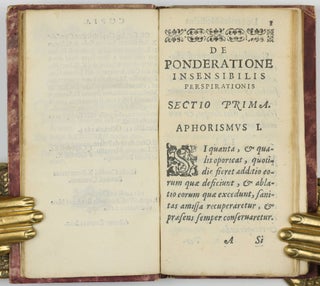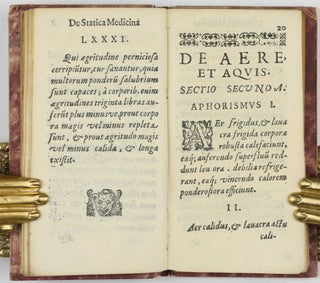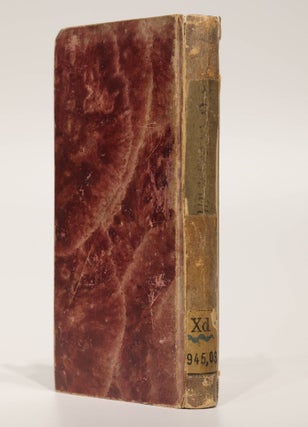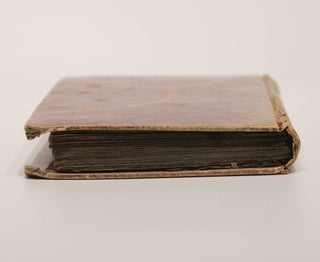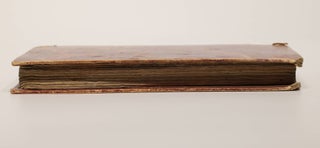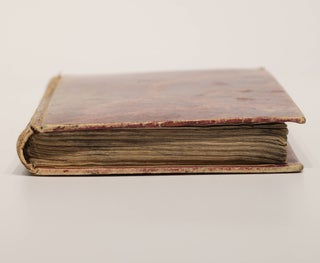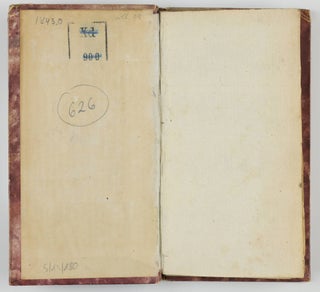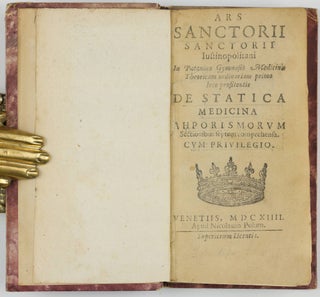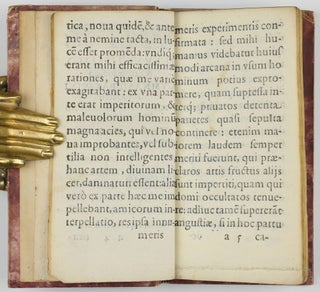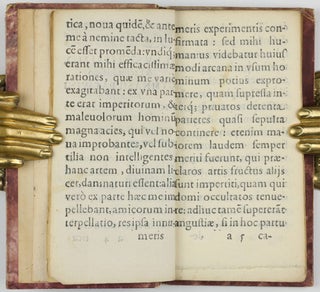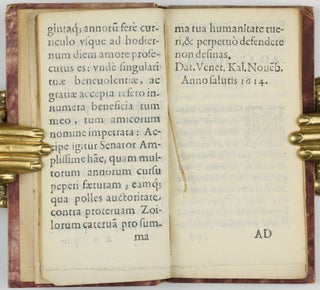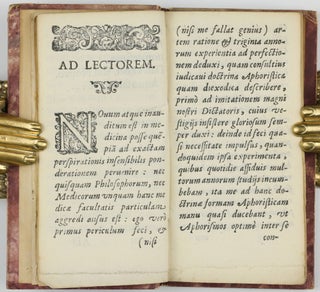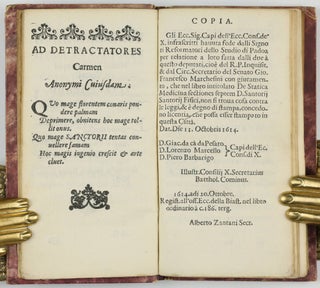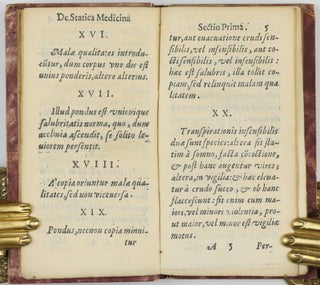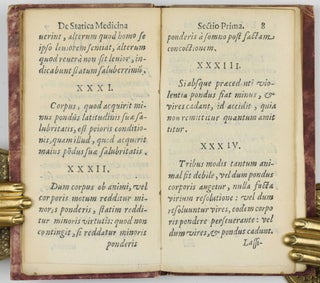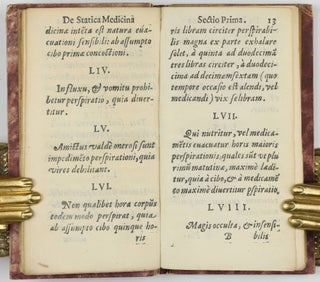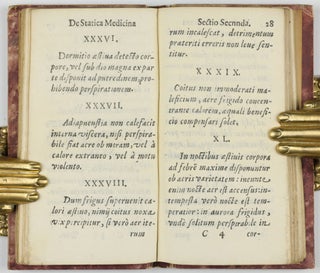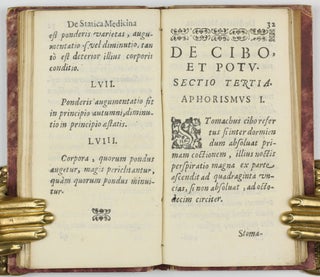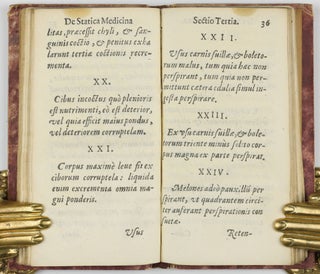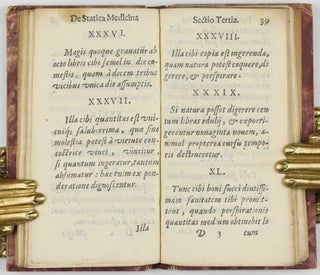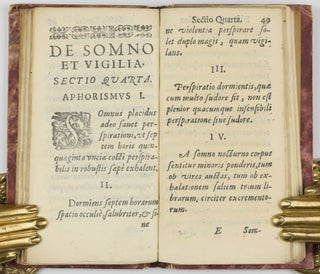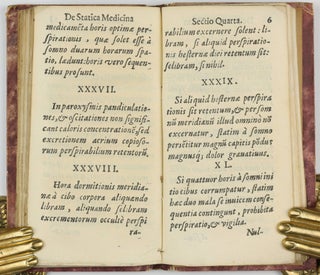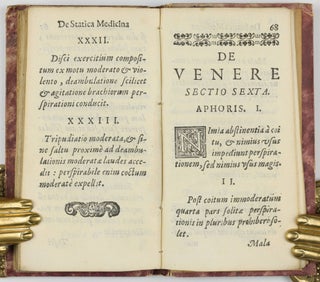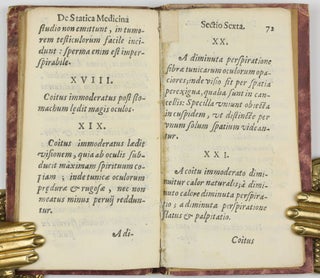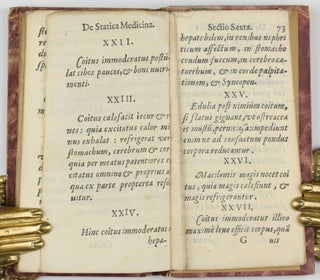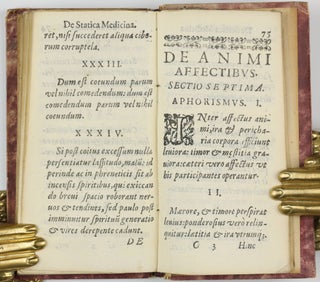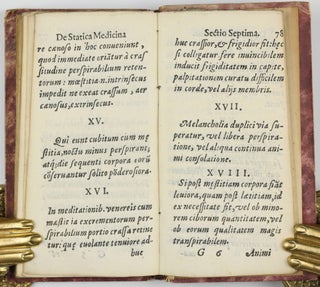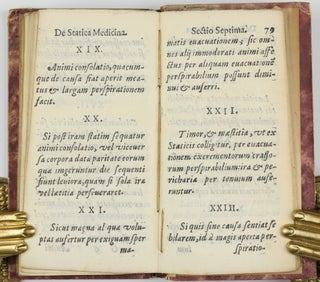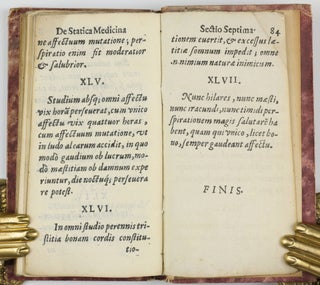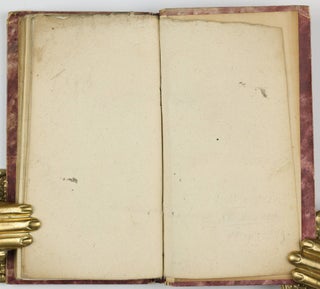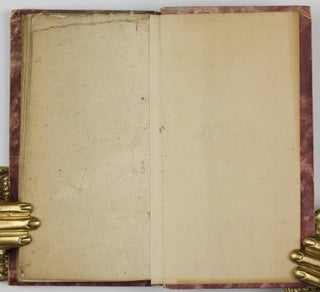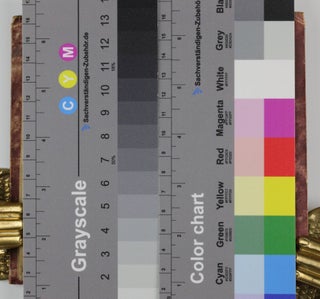The foundational work that introduced quantitative experimentation into biological science
Ars ... de statica medicina aphorismorum sectionibus septem comprehensa.
Venice: Niccolo Poli, 1614.
1st Edition. Hardcover. Very Good. Item #003776
12mo (135 x 75 mm). [10], 84 leaves. Bound without initial blank leaves A1-2. Signatures: a12 A-G12 (-A1-2). Title with woodcut device, woodcut initials; woodcut and typographic head- and tailpiece ornaments. Bound in 19th century marbled cardboard, spine with hand-lettered paper label and printed shelf-mark label (upper corners bumped and scuffed, wear to extremities). A few pages partly unopened, lower margin of some leaves uncut. Except for title-leaf (which is browned and dust-soiled) crisp and clean throughout; the final gathering G with oblique close trimming of fore-margin slightly shaving the outer digit of page number on f. 78 and f. 83; a few leaves with short inner margin including the title which also has a clean tear and two repaired tears at gutter touching letter "A" of the word "aphorismorum." Provenance: Library of M.D. Johannes Büttner, Germany. Still a very good, tall and textually complete copy. ----
FIRST EDITION OF THIS MILESTONE WORK OF MEDICINE, AND OF UTMOST RARITY. Ranked with Harvey's De motu cordis throughout the 17th and 18th centuries, called by Boerhaave the most perfect of all medical books, Santorio's Ars de statica medicina "introduced quantitative experimentation into biological science" (DSB).
"This collection of aphorisms is the work by which Santorio's ideas became widely known. Throughout most of the seventeenth and eighteenth centuries, Santorio's name was linked with that of Harvey as the greatest figure in physiology and experimental medicine because of his introduction of precision instruments for quantitative studies. He was also the founder of metabolic research. Using himself as a subject, Santorio conducted a long series of experiments with a scale and pulse-clock (first mentioned in Santorio's Methodi vitandorum errorum omnium [1603]), a thermometer and other measuring instruments. He used these and still other instruments to measure such metabolic phenomena as pulse rate, respiration, body temperature and the daily variations in the weight of his body relative to ingestion and excretion. He determined that most excretion takes place invisibly through the skin, proved that this invisible excretion could be measured by systematic weighing, and showed that the rate of excretion varied considerably as a function of both physiological and environmental factors. Santorio's work introduced quantitative experimentation into biological science and opened the way to mathematical and experimental analysis of physiological phenomena. The first edition of this much-reprinted work is extremely rare" (Norman).
"The slow process by which Hippocratic and Galenic medicine was modified and finally abandoned is well illustrated in the career and writings of Santorio. While remaining faithful to many of the key assumptions and doctrines of classical medicine, Santorio nuanced and updated them sufficiendy to position physiology within the compass of the new iatrophysics of the seventeenth century. The son of a Venetian nobleman, Santorio was educated at Padua and later taught there. His family's connections and social standing brought him into close contact with such eminent intellectuals and scientists as Paolo Sarpi, Girolamo Fabrici, Giambattista della Porta, and Galileo; he even sent the last-named a copy of his most important work, De statica medicina, in 1615. Cautious, even conservative, De statica medicina nevertheless broke enough new ground to be widely esteemed and praised by contemporaries. In the seventeenth and eighteenth centuries, Santorio was frequendy associated with Harvey as one of the founders of the new medicine. Santorio made two related and fundamental contributions to seventeenth-century medicine. He was foremost among physicians of his time in introducing quantitative techniques and experimentation into biology. The 'static medicine' Santorio described and developed was essentially Hippocratic and was founded on a conception of health as the proper balance of the bodily humors, health being defined as an equilibrium and pathology as a disequilibrium. In Santorio's view, however, this balance was expressed not only in terms of kind but of degree as well - static medicine therefore required exact methods of detection, description, and measurement of degree with respect to what the body consumes and expels. Part of Santorio's originality here was in verifying his hypothesis that much of what is eliminated by the organism is discharged through the skin and lungs and that the relationship between these and visible excretions is a function of various factors, including age, diet, and activity" (Grolier).
Of this exceedingly rare first edition only two copies are recorded in America. Copies have rarely come up to market. The (not perfect) copy of Haskell F. Norman sold at Christie's auction in 1998 for USD 63,000.
References: Grolier Medicine 25; Norman 1890 (defective, E11 torn with loss); DSB XII, pp. 101-104; Garrison-Morton 573; no copy listed in Book Auction Records 1974-97; no copy of 1st ed. in Waller and NLM/Krivatsy; Wellcome I, 5760 (defective); not in Lilly Library; Eimas, Heirs of Hippocrates 399 (later ed.).
Visit our website for further reading and images!
Sold
Delivery time up to 10 days. For calculation of the latest delivery date, follow the link: Delivery times
Lieferzeit max. 10 Tage. Zur Berechnung des spätesten Liefertermins siehe hier: Lieferzeiten


